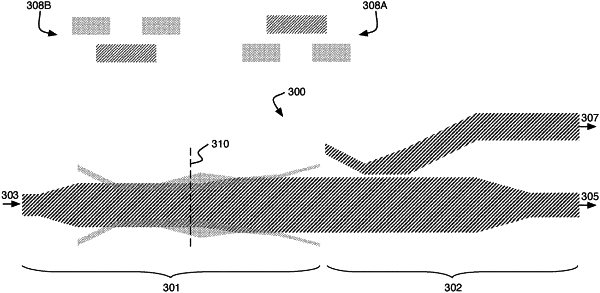| CPC G02B 6/2766 (2013.01) [G02B 6/12004 (2013.01); G02B 6/126 (2013.01); G02B 6/2726 (2013.01); G02B 6/276 (2013.01); G02B 6/2773 (2013.01); G02B 6/12002 (2013.01); G02B 6/1228 (2013.01); G02B 6/125 (2013.01); G02B 6/14 (2013.01); G02B 6/2733 (2013.01)] | 15 Claims |

|
1. An apparatus comprising:
a photonic integrated circuit (PIC) including a plurality of optical waveguides; and
a polarization rotator structure integrated in the PIC and optically coupled at a first end to at least one of the optical waveguides, the polarization rotator structure including:
a first core structure formed at a first layer, the first core structure extending from the first end to a second end of the polarization rotator structure, and
a second core structure formed at a second layer that is at a different depth than the first layer and formed in proximity to the first core structure,
wherein the first core structure and the second core structure provide mode hybridization between at least two orthogonally polarized waveguide modes of the polarization rotator structure,
wherein the first layer and the second layer are separated by a third layer comprising a material different from a core material of the first core structure and different from a core material of the second core structure, and/or the core material of the first core structure is different from the material of the second core structure, and
wherein the second core structure of the polarization rotator structure includes at least two separate contiguous portions of the core material extending over at least a portion of the distance between the first end of the polarization rotator structure and the second end of the polarization rotator structure.
|